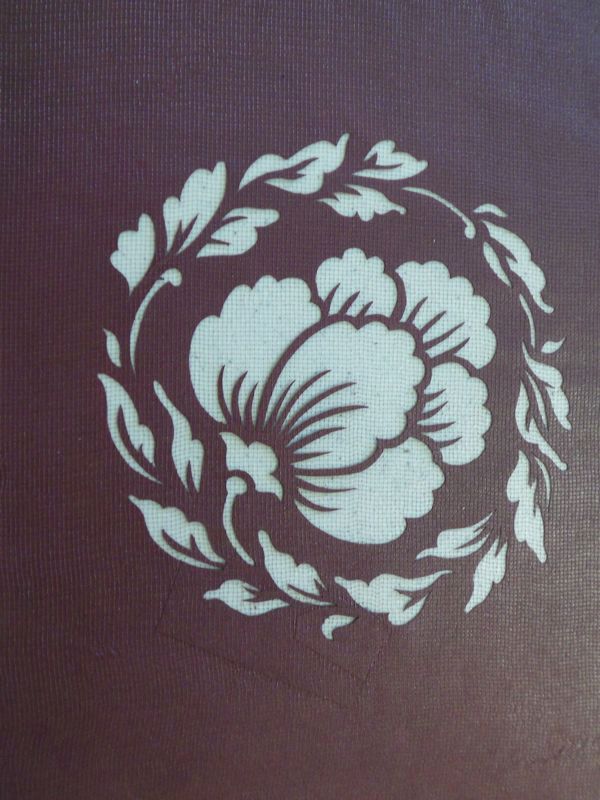
I’m sure you’ve seen, as have I, garments made from one-of-a-kind fabrics. They’re often fairly simple in shape – ponchos come to mind – so it was a huge treat to see some of the work of my student Teresa Kennard the other day at a class in Denver. Her garments are detailed, well thought-out, and beautifully put together.
Teresa’s an award-winning weaver – her work has been featured countless times in Handwoven Magazine and in juried exhibitions. Her list of awards is long, and most recently, her work was chosen for a very prestigious exhibit in Sweden. Clearly, she’s awfully good at what she does.
During the class, she worked on a dress woven from this fabric….the fiber content is wool and stainless steel, amazingly enough. It was beautifully light and pretty cooperative – we backed it with silk organza to lend a little bit of gentle stability behind-the-scenes. All I can tell you about the design is that it was beautifully draped….and I’d show you the dress, but it’s being entered in a competition, so that will have to wait!
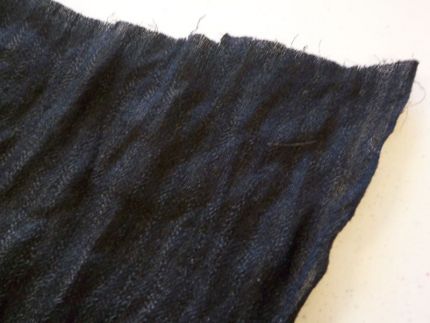
Here’s another beautiful fabric she’s woven.
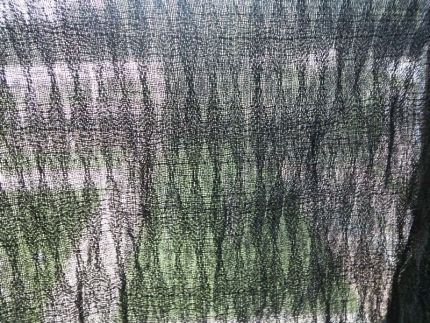
Teresa often works with stencils. The first two pictured below were hand-carved using an ancient Japanese tehcnique that was taught to Teresa by Elda Kohls of Ft. Collins, CO. As you can see, this technique allows for very intricate and detailed designs.
Here’s Teresa’s explanation of the process:
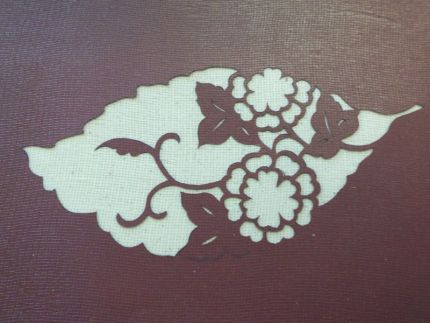
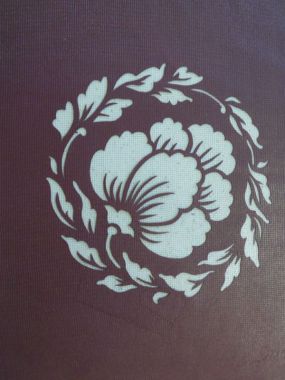
This antique stencil is from Teresa’s collection.
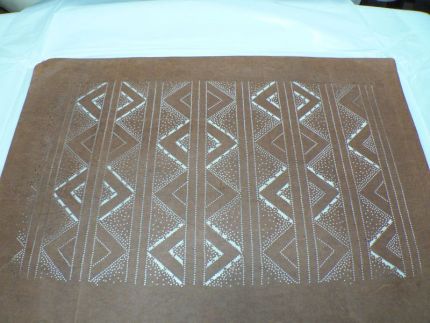
Here’s one of her ensembles – a nightgown and a matching robe. The handwoven fabric is wool and cashmere (and beautifully soft, I might add). The technique is a combination of woven shibori which is done on a loom, and then felt-resisted off the loom to give the fabric an open-lacey appearance. The fabric was then stenciled using a hand-carved stencil.
I asked Terea about the outfit – and here’s what she had to say:
“I inherited my love for beautiful nightgowns and robes from my mother. This garment was constructed with the thought of minimal care. All the seams and hems are sewn so that they will not require ironing after cleaning. The ribbons for the straps and robe ties are made of hand-dyed silk ribbons.”
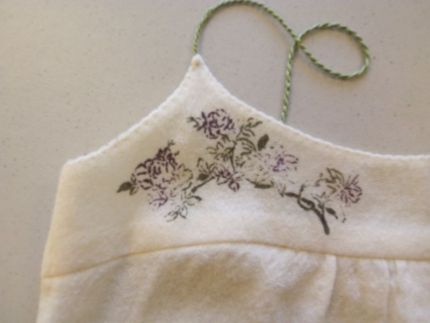
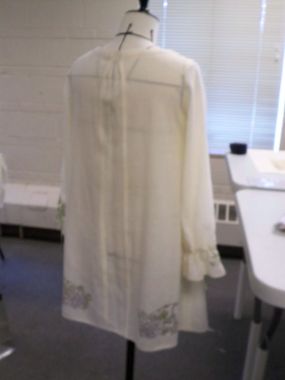

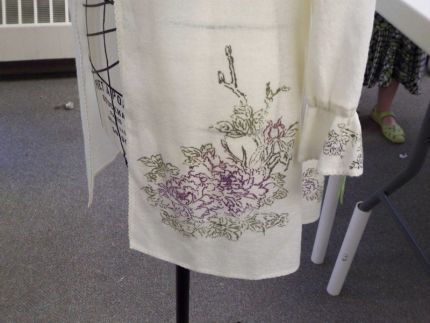
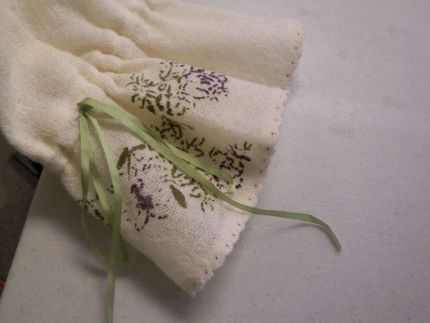
The edges have been zig-zagged with pale green thread on the outside and ivory on the inside.
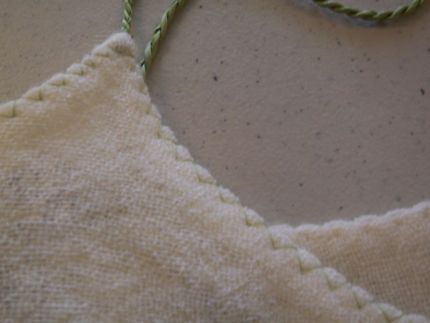
Rows of undulating stitches hold the seam allowances in place:
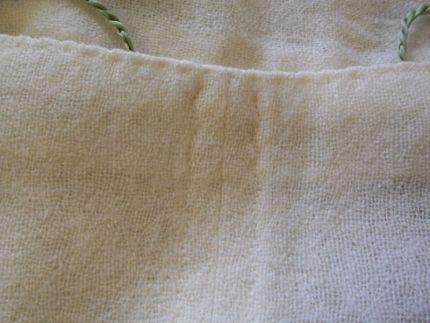
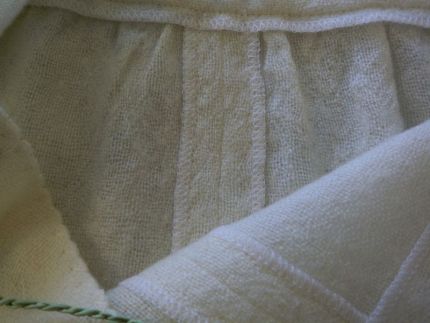
Teresa describes what she’s currently working on:
If you’d like to learn more about Teresa’s lovely work, you can contact her at [email protected].


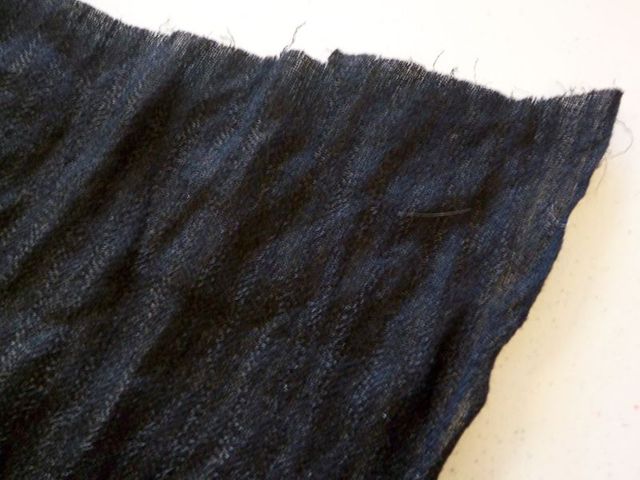
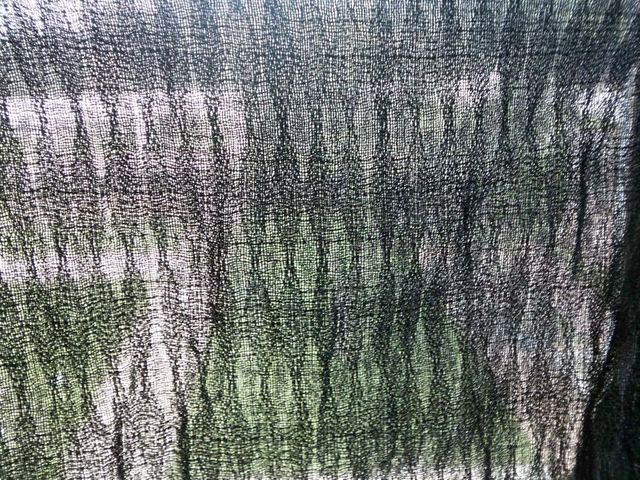
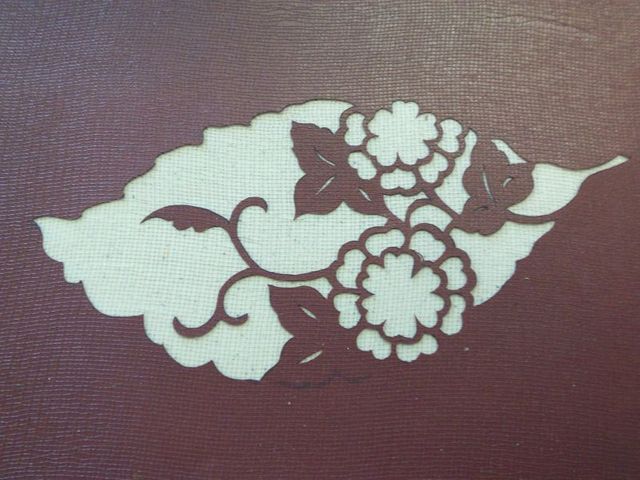
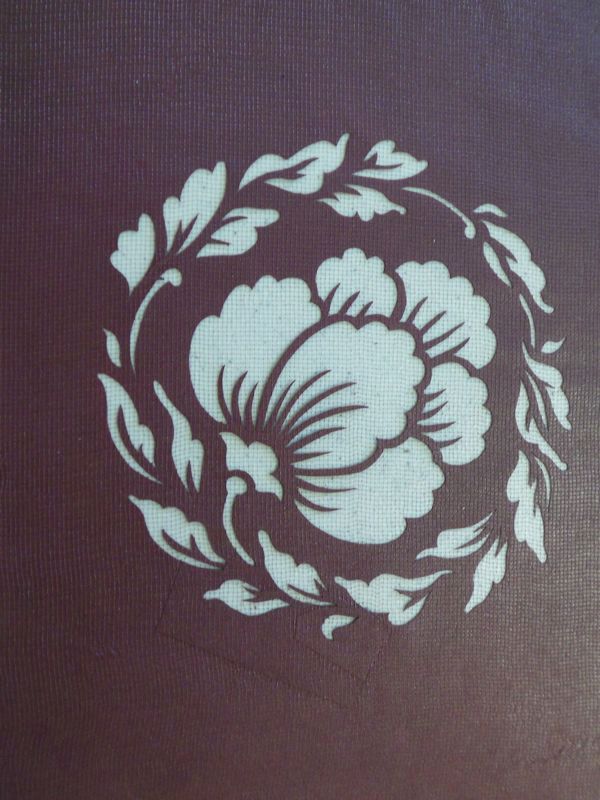
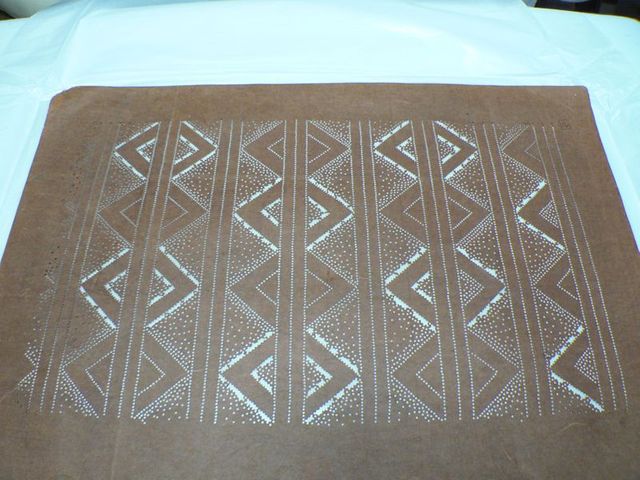
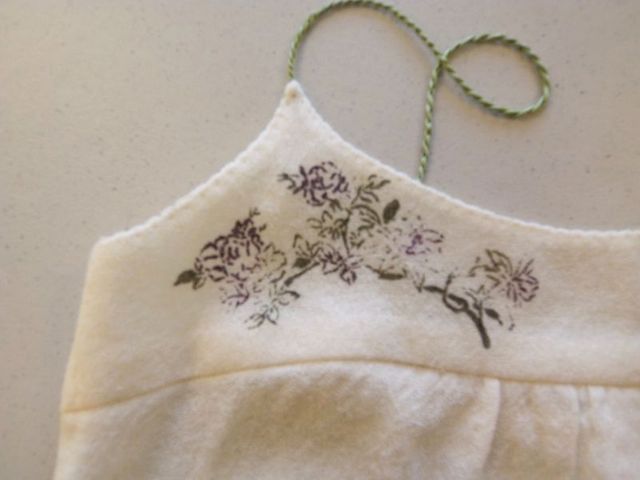


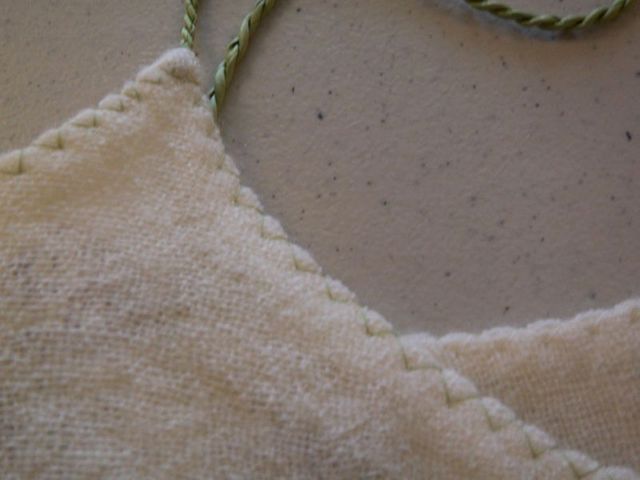
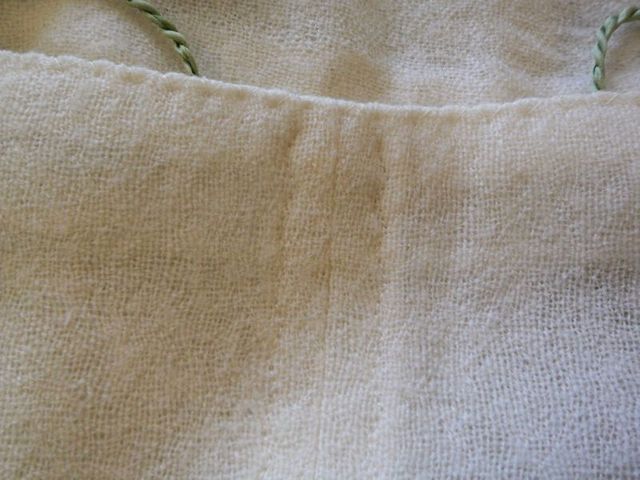
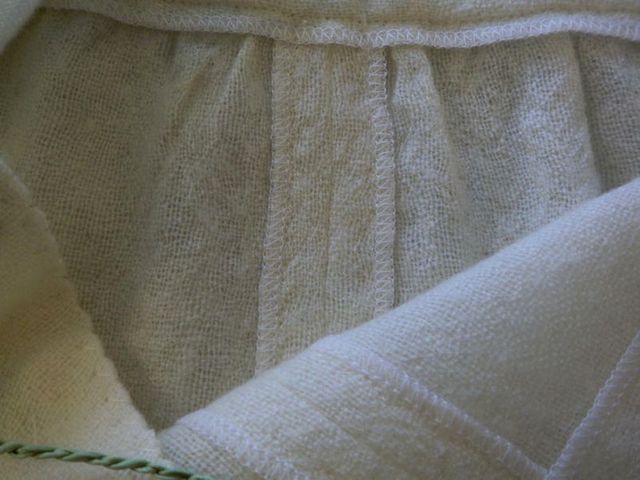

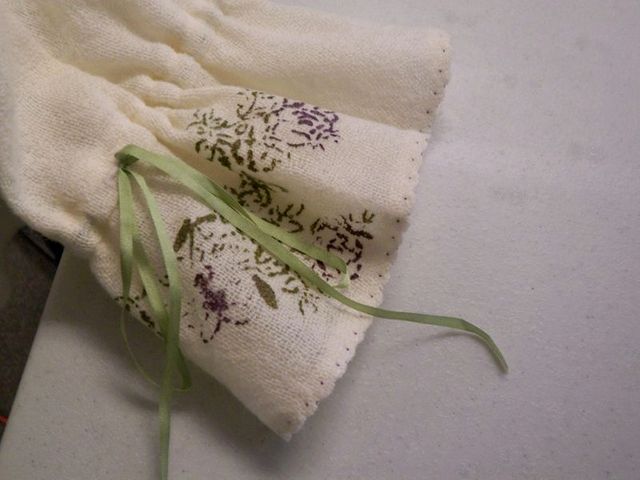
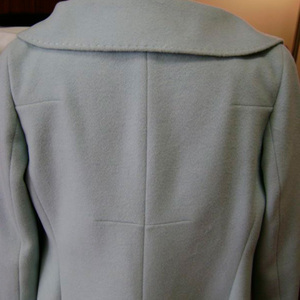

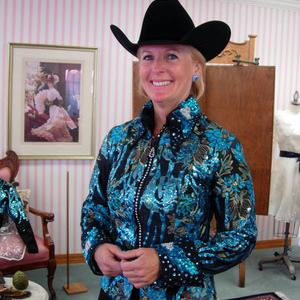
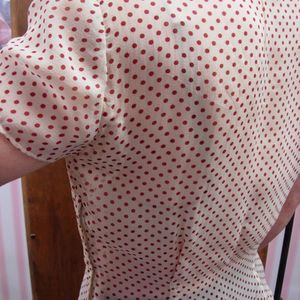






























Thank you for sharing such beautiful and unique work.
Lovely! Is the stencil method that for Okinawan Bingata, or is it something else?
Lovely stuff. Interesting techniques and a joy to look at.
The Fabric and the designs are beautiful. This is an interesting introduction to the technique and the artist. You mentioned a class in Denver. May I ask where the class was presented?
Beautiful but can you imagine sleeping in such a beautiful garment? Made for a honeymoon perhaps?
Ditto re question on classes in Denver -- I cant' find anything of this quality.
Wow! What beautiful work! Many years ago I took a weaving class in college so I have a little understanding of just how much talent and work goes into weaving such fine cloth.
The whole thing is quite wonderful - the attention to detail great.
I just can't imagine actually sleeping in such a garment for two reasons:-
a) Not wanting to spoil it!
b) Even THAT fine wool next to the skin must be very uncomfortable!
The stencils interested me the most. I am adept at cutting stencils, but had not thought of doing large ones. These stencil would make a definite eye catching design element.
So nice to see a weaver get some attention from sewers! The paste resist technique is called "katazome" in Japan. For more details, the delightful John Marshall is the expert in the US - http://www.johnmarshall.to/
It's very nice and lovely I like the print thanks for shering.
What talent! I love her ideas and her work is so beautiful.
I know - the thought of sleeping in something so lovely! But, I have to say, the fabric - which combined wool with cashmere - was very, very soft.
And the Denver class was one of my Couture Sewing School sessions - it wasn't a class for weaving or dyeing. Teresa just happened to be in the class, using a fabric she'd woven (and occasionally I get students who have done that). I was so fascinated with the wool and stainless steel fabric that I asked her to show me more of her work....so that's how it all came about. And interestingly, another student happened to have a stash of antique kimono fabrics and antique Japanese stencils...so that added to the experience, too. Very synergistic!!!